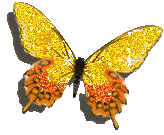 I've been trying to introduce some of the aspects of Feng Shui into my life and am finding it to be very relaxing. Feng shui is an ancient art and science developed over 3,000 years ago in China that believes in using the laws of Heaven and Earth to improve one's life by receiving positive "qi" (pronounced chee) . It deals with how to balance the energies of any given space to assure health and good fortune for people inhabiting the space. Feng means wind and wind chimes are used today to help find that balance. The Chinese also use gongs outdoors, in their operas and in their temples for that purpose as well as the tones that are derived. Qi is a moveable negative or postive life force that plays an essential role in feng shui. Qi traditionally related to a structure, the direction it faced, it's age and it's interaction with the surrounding environment (slope of the land, vegetation etc.). At Hong Kong Disneyland, the main gate was shifted by 12 degrees as the builders understood the importance of feng shui to the Chinese culture.
I've been trying to introduce some of the aspects of Feng Shui into my life and am finding it to be very relaxing. Feng shui is an ancient art and science developed over 3,000 years ago in China that believes in using the laws of Heaven and Earth to improve one's life by receiving positive "qi" (pronounced chee) . It deals with how to balance the energies of any given space to assure health and good fortune for people inhabiting the space. Feng means wind and wind chimes are used today to help find that balance. The Chinese also use gongs outdoors, in their operas and in their temples for that purpose as well as the tones that are derived. Qi is a moveable negative or postive life force that plays an essential role in feng shui. Qi traditionally related to a structure, the direction it faced, it's age and it's interaction with the surrounding environment (slope of the land, vegetation etc.). At Hong Kong Disneyland, the main gate was shifted by 12 degrees as the builders understood the importance of feng shui to the Chinese culture.
Shui means water and many people have an indoor fountain as their symbol to improve the energy in their homes. Symbols are important in feng shui for their history and their meaning, The usual ones are Chinese dragon coins tied with a red string and three legged toads. Today, interior decoration plays an important part in the Western world's practice of feng shui to help people live prosperous and healthy lives.
The environment is important in feng shui and arbors and trellises play an part in supporting an eco-system. The environment is in a delicate balance and it can be harmed by planting "lucky bamboo" in an area that can not support it. Many believe that feng shui and the eco-system are used for healing purposes and block negative energies that might otherwise have bad effects. There are many ways to improve the energy both inside a home and outside to help in finding balance.







